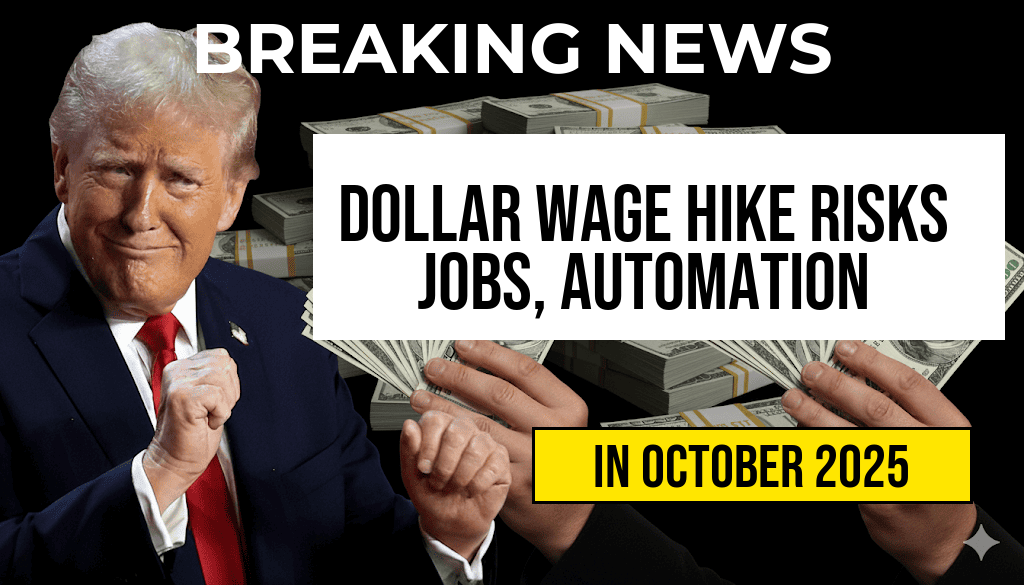The proposal to increase the minimum wage by just one dollar has ignited a debate among small business owners and economic analysts about its potential repercussions. While advocates argue that higher wages can lift workers out of poverty and stimulate local economies, opponents warn that even a modest increase could strain small businesses already grappling with rising costs and technological disruptions. As automation continues to reshape the retail and service sectors, there is concern that a marginal wage hike may accelerate the push toward replacing human labor with machines. Industry experts are closely examining whether such a seemingly small adjustment could inadvertently lead to significant job cuts, especially in small enterprises that operate with narrow profit margins.
Potential Economic Impacts of a One-Dollar Wage Increase
Small Business Profit Margins Under Pressure
Small businesses often operate with tight profit margins, making any increase in labor costs a critical concern. A $1 rise in the minimum wage, though seemingly modest, can cumulatively add up to substantial expenses over time. For establishments like local restaurants, retail shops, and service providers, labor costs may account for 20% to 30% of total expenses. An incremental wage hike can force these businesses to reevaluate staffing levels, pricing strategies, or operational hours.
Automation as a Cost-Reducing Alternative
Automation technologies—ranging from self-service kiosks to robotic delivery systems—have become increasingly accessible for small businesses seeking to reduce labor costs. With the added financial pressure from wage increases, some firms might accelerate investments in automation to offset higher wages. According to a 2022 report from the Wikipedia on Automation, advancements in affordable automation solutions are making it feasible for small enterprises to replace entry-level roles, potentially leading to job reductions.
Labor Market Dynamics and Employment Trends
Labor economists warn that even a slight increase in wages could lead to unintended employment shifts. Data from the U.S. Bureau of Labor Statistics indicates that small businesses are more sensitive to wage fluctuations due to their limited financial buffers. A Forbes article notes that some small firms have already reported plans to reduce hours or slow hiring following recent wage discussions. While a dollar increase might seem negligible, its impact on employment levels could be disproportionate in sectors with thin profit margins and high automation potential.
Balancing Wage Growth and Economic Sustainability
Wage Increase vs. Employment Stability
| Outcome | Description |
|---|---|
| Minimal Wage Impact | Small businesses absorb increased costs with minimal staffing changes, possibly raising prices slightly. |
| Job Reductions | Firms cut hours or lay off workers to manage higher costs, especially in low-margin sectors. |
| Accelerated Automation | Businesses invest in automation to reduce dependence on human labor, potentially leading to job displacement. |
Policy Considerations and Regional Variations
Proponents of wage hikes argue that modest increases can be phased in gradually to minimize disruptions. States with higher living costs or where small businesses are concentrated in low-margin industries may experience more pronounced effects. For example, regions like California and New York have implemented tiered wage increases, allowing businesses time to adapt. Conversely, in rural areas with limited automation infrastructure, even a small raise could pose significant employment challenges.
The Broader Picture: Automation and Future Workforce Trends
Automation as Both Opportunity and Threat
While automation offers a pathway to controlling costs, it also raises questions about the future of employment across small business sectors. The adoption of intelligent systems can improve efficiency but may also replace jobs traditionally held by entry-level workers. According to research from the Wikipedia on Automation, the pace at which automation is adopted varies widely depending on technological availability, business size, and regional economic policies.
Preparing Small Businesses for Change
Experts recommend that small businesses consider strategic planning to navigate wage increases and automation trends. Investments in employee training, diversification of offerings, and technological upgrades can help mitigate adverse effects. Governments and industry groups are also providing resources, including grants and technical assistance, to support small firms in adopting new technologies without sacrificing employment levels.
Public Perception and Political Discourse
The debate over modest wage increases often reflects broader political ideologies. Advocates emphasize the importance of fair pay and economic equity, while critics focus on the potential for increased unemployment and business closures. As policymakers weigh future minimum wage adjustments, understanding the nuanced impacts on small businesses remains crucial for crafting balanced economic strategies.
For further insights into how wage policies influence small business dynamics, consult resources like the Wikipedia page on Minimum Wage and analyses available through Forbes Business Council.
Frequently Asked Questions
What are the potential impacts of a one-dollar wage increase on small businesses?
A one-dollar wage increase could lead to higher operational costs for small businesses, potentially prompting them to cut jobs or reduce employee hours to maintain profitability.
How might automation influence the decision to cut jobs following a wage hike?
With rising wages, some small businesses may turn to automation solutions to reduce labor costs, which could result in job reductions despite the wage increase.
Are small businesses likely to absorb the cost of a one-dollar wage increase without laying off workers?
The ability of small businesses to absorb the cost depends on their profit margins and financial stability. Some may choose to maintain employment levels, while others may consider cost-cutting measures.
What strategies can small businesses adopt to manage increased wage expenses?
Small businesses can consider improving productivity, streamlining operations, or investing in automation technology to offset higher wages without resorting to job cuts.
What role do policy makers and government play in addressing concerns about wage increases and automation?
Policy makers can design wage policies that balance fair compensation with economic stability, and provide support or incentives for small businesses to adopt automation responsibly, minimizing job losses.

Leave a Reply